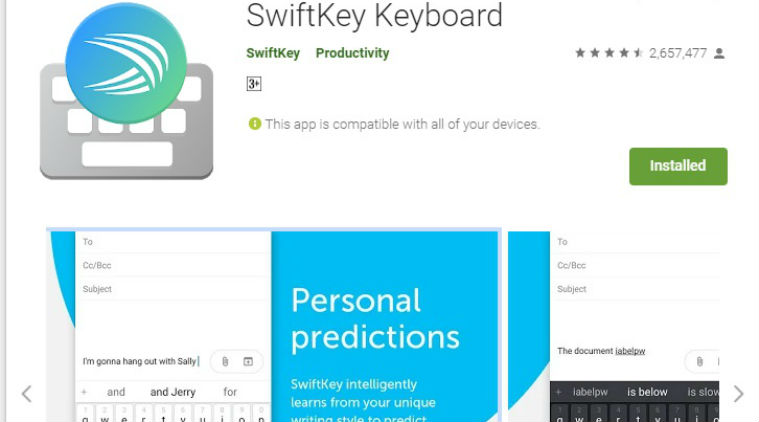


The update also brings fixes for vibration settings and claims it won't change on upgrade. The on-screen keyboard app in its changelog claims that the update improves typing performance when changing screen orientation. The emoji panel will now also remember the last used category for user convenience.

It also adds double-word prediction and offers two free new festive holiday themes for all users. The update to SwiftKey app primarily brings a redesigned emoji panel, apart from new light and dark themed emoji panels. The updated SwiftKey Android app is now available to download/ update via Google Play. Microsoft has no plans to withdraw its SwiftKey keyboard app from Android app stores, and it continues to use the same swiping and predictive technologies in its soft keyboard for Windows users.SwiftKey Keyboard app for Android has received an update that brings several new features including a revamped emoji panel. It is not farfetched to assume this practice has met significant resistance from Apple's increasingly privacy-focused stance. SwiftKey relies on collecting a fair amount of user data to feed its predictive engine. Nevertheless, the senior ZDNet editor has suspicions about Apple’s policies that safeguard, and limit rival firms’ potential to monetize, its walled garden. Windows reporting stalwart Mary Jo Foley couldn’t wheedle any reasons behind the move from a Microsoft spokesperson. The shallower integration of SwiftKey with iOS might be one of the telltale signs of why Microsoft, who bought out SwiftKey in 2016, decided to withdraw this app from iOS devices. However, Apple never allowed proper full-integration of third-party keyboards, and thus SwiftKey iOS felt restricted compared to the Android version, with users thrown back to the minimal Apple keyboard when entering security sensitive and some other OS dialogs. When Apple opened iOS up to third-party keyboards in 2014 (with iOS 8) I remember I quickly installed SwiftKey on my iPad to benefit from the same predictive library that had been built up on my Android smartphone, and bring a slick swiping text input method to iOS.


 0 kommentar(er)
0 kommentar(er)
